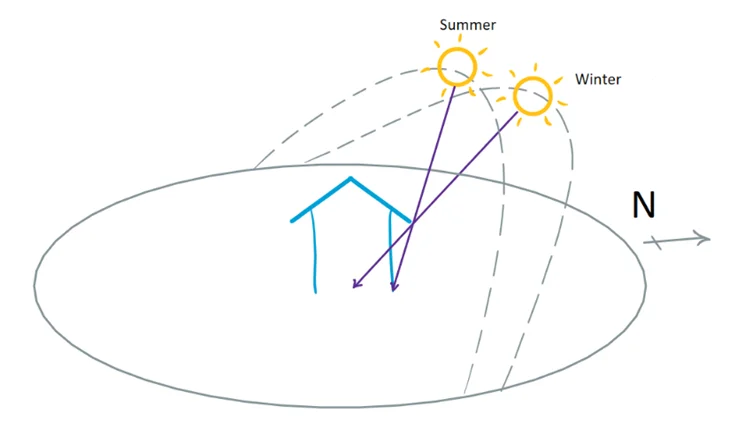The Seasons and Your Home’s Orientation
The decision of your home’s orientation may feel complicated. You may want to optimise daylight during the winter however you can’t change the orientation for summer when you don’t want that sunlight entering. How do we make this work to the most optimised passive design?
Luckily, the sun’s path is different in winter and summer. The sun has a lower-angled path during winter as compared to summer. This can be used to your advantage in the design of your home for passive heating and cooling effects.

Winter
In winter the sun’s path is at a lower angle than in summer. A north-facing window will receive direct sunlight. This is ideal for passive heating and you can strategically orient your home to make the most of this for major living areas.
Summer
So you’ve oriented your house to the north for that winter warmth. But now it’s summer and you want to minimise the amount of sun reaching in and heating up your home.
In summer the sun’s path is at a greater angle to the horizon, with sunlight coming from overhead, more so than in winter. Shades and eaves can be designed to reduce the path of the sun from reaching the living spaces of your home. The less sunlight with direct access to your home, the less heat to be stored in your living spaces.
Other climates
Some locations around Australia do not have a need for both heating and cooling. Tropical areas such as North Queensland and the Top End would favour designs that optimise the orientation of the home for passive cooling throughout the year. In this case, you may favour south-facing living areas for year-long shade.
Of course, with all designs, you would consider the site and environmental influences, including vegetation, other buildings, or major reflective areas (large glass buildings or large bodies of water).
Passive design
This results in passive heating and cooling that is dynamic with the seasons. This is a great way for you to improve the energy efficiency of your home by reducing your reliance on additional heating and cooling.
